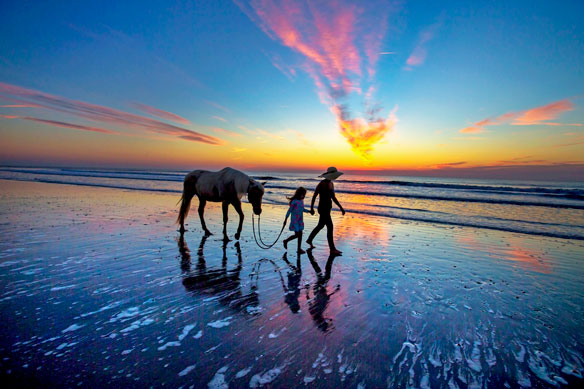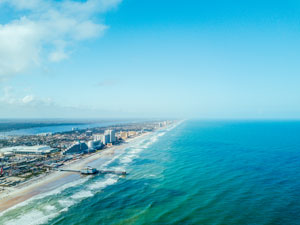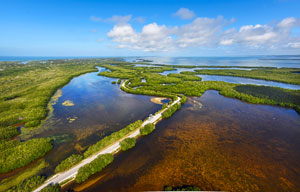
Visit Florida
Making the pivot, staying ahead of the competition

BOB MOWAT
As VISIT FLORIDA gears up to host its first Virtual Huddle this week, its president and CEO, Dana Young took some time to respond to some questions from Canadian Travel Press, observing at one point that: “The COVID-19 pandemic has tested our industry like never before, but Florida tourism is no stranger to crisis … We are a resilient industry and a resilient state, and VISIT FLORIDA is doing everything possible to assist with its recovery.”

Young
Prior to the pandemic, Florida tourism had just capped off its tenth consecutive year of record visitation, welcoming 130 million visitors in 2019 that contributed $91 billion to our economy and supported 1.5 million jobs.
By April 2020, the COVID-19 crisis had Florida tourism at an effective standstill, with preliminary estimates for Q2 indicating nearly a 60% decline in domestic travel, and 99% decline in travel from Canada, our No. 1 international market.
The COVID-19 pandemic has tested our industry like never before, but Florida tourism is no stranger to crisis. From hurricanes, to red tide, to oil spills, to terrorist attacks, we’ve seen it all, and it’s only made us stronger. We are a resilient industry and a resilient state, and VISIT FLORIDA is doing everything possible to assist with its recovery.
Throughout the pandemic, we’ve remained wholly focused on supporting our tourism businesses, from freezing membership dues and unlocking paid partner benefits for free access, to developing a comprehensive rebound plan that delivers visitors to all 67 counties in Florida.
What’s your assessment of where things are at right now? Is the industry in a good place? Why or why not?
As we continue our recovery, it’s important to remember it’s a marathon and not a sprint. We’ve come a long way over the past year, and the steps we’ve taken as an industry, along with continued progress with vaccine distribution and other public health actions, have put us in the best possible position for navigating the road ahead.
 On the brighter side, Florida is one of the only destinations marketing right now, which positions us to not only regain our market share, but increase it as well.
On the brighter side, Florida is one of the only destinations marketing right now, which positions us to not only regain our market share, but increase it as well.
I understand that a new report has just been released on Visit Florida that indicates that the organization “gives a good return on investment.” Can you talk about this a bit and why the report’s findings are significant?
Based on a recent report from Florida’s Office of Demographic & Economic Research (EDR), for every dollar spent on VISIT FLORIDA, the state of Florida received 3 dollars and 27 cents back in tax revenue.
Though VISIT FLORIDA has always ranked high in this report, which is released every three years and conducted completely independently from our organization, this is the highest return on investment that’s ever been calculated. For comparison, EDR defines anything over 1:1 as a good investment.
In addition, the report also noted that VISIT FLORIDA’s programming has contributed nearly $16 billion to Florida’s real GDP, $12.5 billion in real Disposable Personal Income, $744 million in state revenue, and an additional 25,000 jobs every year over the past three years.
These findings just further illustrate the tremendous value of VISIT FLORIDA and the positive impact we have on every Florida taxpayer.
As we continue our recovery, VISIT FLORIDA’s work has never been more important for delivering the visitors our state depends on.
Does Visit Florida have a plan to help the industry recover once the pandemic is behind us? Can you share some of the details of that plan and how it is being (or will be) rolled out?
 As the pandemic was first unfolding this past spring, VISIT FLORIDA began developing a tourism recovery plan that was built upon continuous evaluation of public health data and travel-related metrics to determine when and how to implement it. Our research told us that, initially, people would be most comfortable traveling close to home.
As the pandemic was first unfolding this past spring, VISIT FLORIDA began developing a tourism recovery plan that was built upon continuous evaluation of public health data and travel-related metrics to determine when and how to implement it. Our research told us that, initially, people would be most comfortable traveling close to home.
This culminated in the launch of the first phase of our rebound plan in late August with an in-state travel campaign. Marketing within our borders was something that we’ve never done before, but was an important first step for restarting tourism.
In October, we expanded our efforts to key domestic drive markets within 700 miles. Highlighting the endless safe vacation opportunities that can be enjoyed year-round in Florida, both campaigns were tremendously successful, accruing over 600 million impressions and aligning with a 73% uptick in visitation in Q3 from Q2 2020.
In the coming weeks, we’ll be debuting advertisements in previously untapped markets in the Western US, including California, Oregon, and Washington, and then internationally, once restrictions ease.
Has Visit Florida been doing any kind of ongoing consumer research during the pandemic? If it has, what kind of intelligence is it getting back? Has the global pandemic changed consumer attitudes to travel? Can you share some of that intelligence with CTP’s readers?
As I previously mentioned, VISIT FLORIDA’s research has been the guiding force of our response and recovery efforts, from our one-of-a-kind COVID-19 data dashboard tracking key industry indicators and trends, to our marketing effectiveness study measuring the success of our rebound efforts so far.
Our findings point to the continued traveller sentiment trend prioritizing safe, outdoor experiences that Florida offers year-round.
In fact, over half of those who saw the outdoor imagery in VISIT FLORIDA’s November ads agreed that Florida had minimal crowds, and 70% agreed Florida was safe and secure, positioning the Sunshine State as a top vacation destination among potential travellers.
Where does the Canadian market fit in Visit Florida’s plans?
It’s no secret that we are very much missing our Canadian travellers, and VISIT FLORIDA is doing everything possible to stay top of mind with our friends up north.
 This includes partnering on a campaign with the Weather Network and Air Canada to promote Florida for the winter/spring travel season, and developing other international marketing experiences with American, Allegiant, and Air Canada airlines.
This includes partnering on a campaign with the Weather Network and Air Canada to promote Florida for the winter/spring travel season, and developing other international marketing experiences with American, Allegiant, and Air Canada airlines.
There are certainly some significant barriers in place right now that discourage travel by Canadians and I’m wondering how much of a challenge this is for Visit Florida in terms of its approach to the Canadian market? What’s its marketing strategy?
While international travel remains uncertain, VISIT FLORIDA is strategically pivoting its efforts to stay ahead of the competition when borders reopen.
In addition to our current Canadian campaigns, we are maintaining in-country representation to continue cultivating relationships with travel partners in our absence, and creating international programs that are accessible to a wider range of partners.
We greatly miss our Canadian visitors, and look forward to the day when we can welcome them back and share our warm Florida hospitality once again.
As a follow up, I’m assuming the Visit Florida has been talking to its partners here in Canada and I’m wondering what kind of feedback you’re getting from them in terms of what they need from Visit Florida?
VISIT FLORIDA is in constant contact with its Canadian partners and has had excellent results from its winter/spring initiatives so far.
Events like Virtual Huddle will be instrumental for the recovery of global travel, and we’re looking forward to offering more international programming that caters to the key Canadian traveler segment.
Last question. Are you optimistic or pessimistic about the future? Why?
Though VISIT FLORIDA doesn’t make projections, I am absolutely optimistic about the future. Our industry has worked tirelessly over this past year to overcome this crisis, and as consumer confidence continues to grow, there will be brighter days ahead both in 2021 and beyond.
